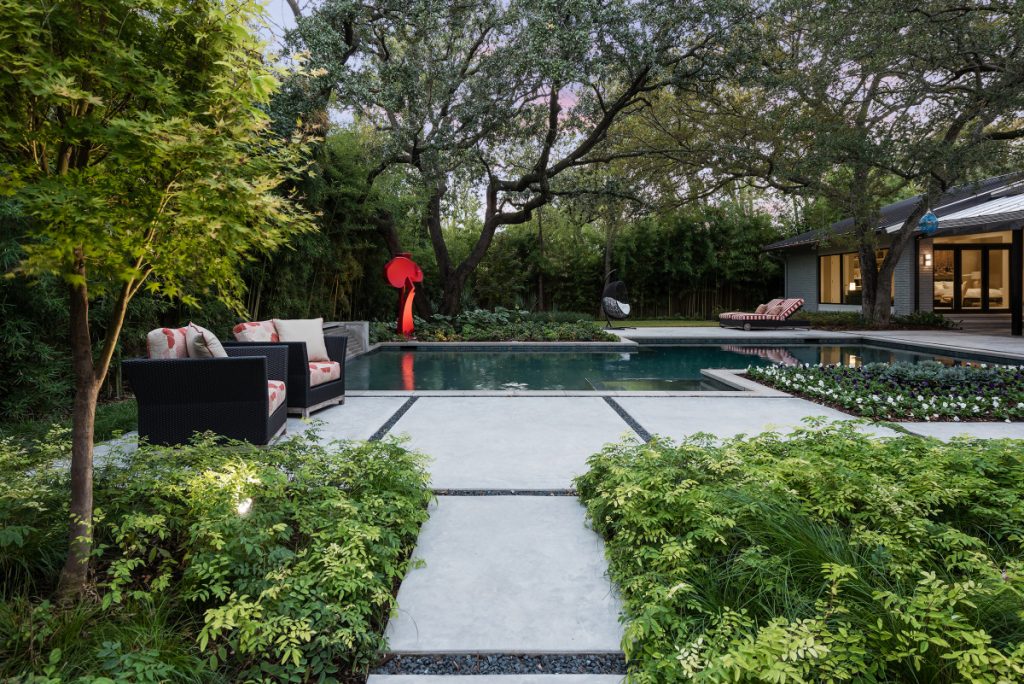
Creating Personal Sanctuaries
Fusing the Link Between Cortisol and Nature
When we were confined to our homes a couple of years ago, we all experienced how crucial it was to our sanity to spend time outdoors. The need to find peace and solitude was often met by taking a walk or finding a serene place outside to relish the silence. The value of the backyard became immeasurable and the demand on our teams to extend living spaces into the fresh air soared exponentially. Not only did we create outdoor living and entertaining spaces, but we fulfilled the innermost desire for personal sanctuaries. Reading nooks, meditation spaces, yoga decks, sports courts, and even outdoor office spaces have risen in popularity. But, this wasn’t just fueled by needing a break from our spouses or children—science confirms that being immersed in nature is essential for our mental health.
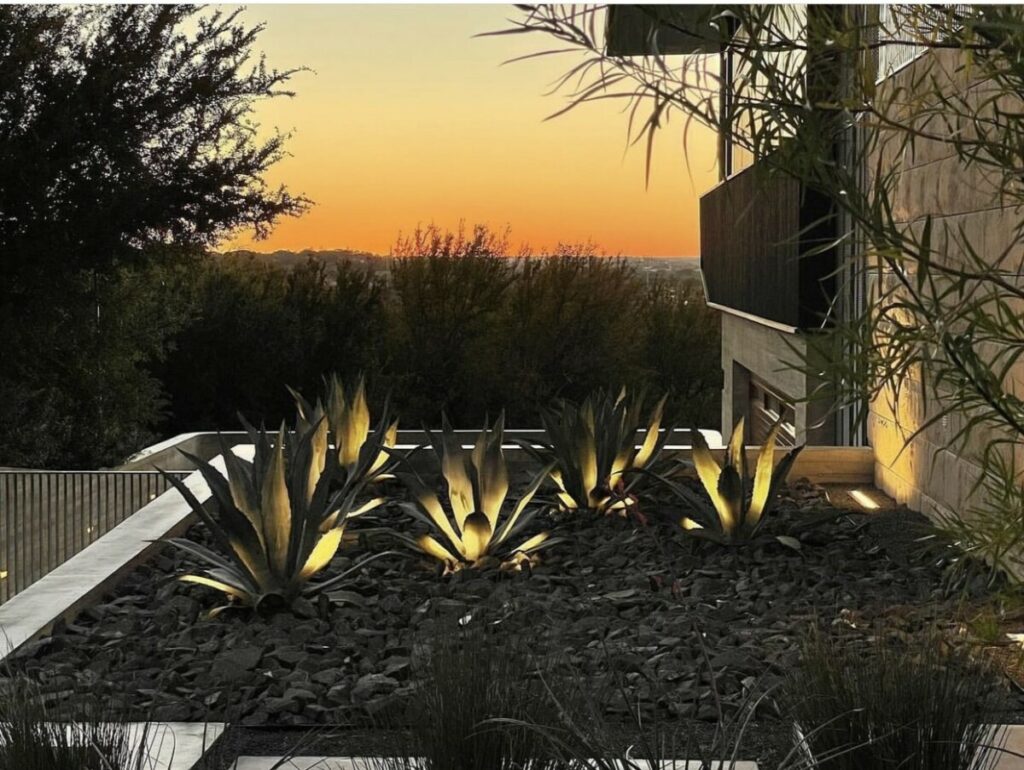
What Are Personal Sanctuaries?
sanc·tu·ar·y
The Oxford Dictionary defines a sanctuary as a place of refuge or safety. Alternative meanings include natural and spiritual elements. We think that the ideal personal sanctuaries embody all three of these essential aspects. Romance nature in your refuge. Hide away in your backyard retreat. Meditate in your safe haven. Personal sanctuaries provide outdoor comfort, serenity, and of course, functionality. These outdoor spaces effortlessly transform tension into tranquility, melt away a sour mood, and soothe any stressful situation.
The Science Behind Personal Sanctuaries
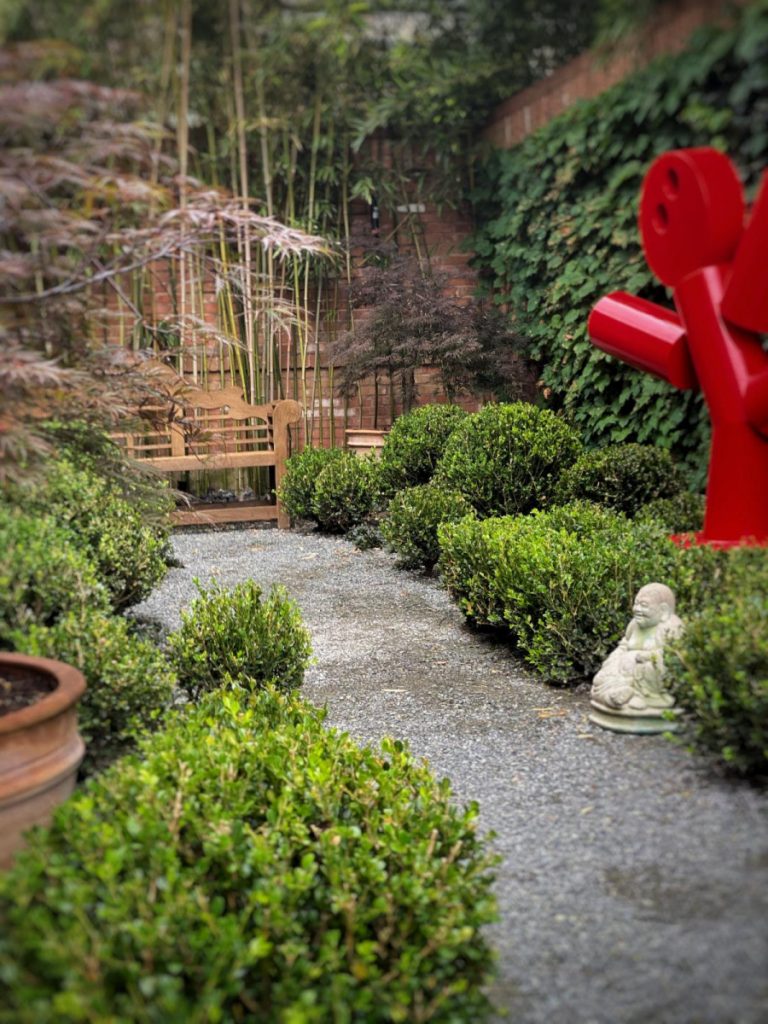
What is Cortisol?
Cortisol is the body’s primary stress hormone3 that contributes to important operations such as:
- controlling blood sugar levels
- regulating the body’s sleep-wake cycles
- managing how the body utilizes carbohydrates, fats, and proteins
- reducing inflammation
- controlling blood pressure
Levels of cortisol increase during times of stress; however, numerous studies have demonstrated the correlation between nature and reduced cortisol levels. In fact, spending at least 20 to 30 minutes immersed in nature was associated with the largest plummet in those pesky cortisol levels4.
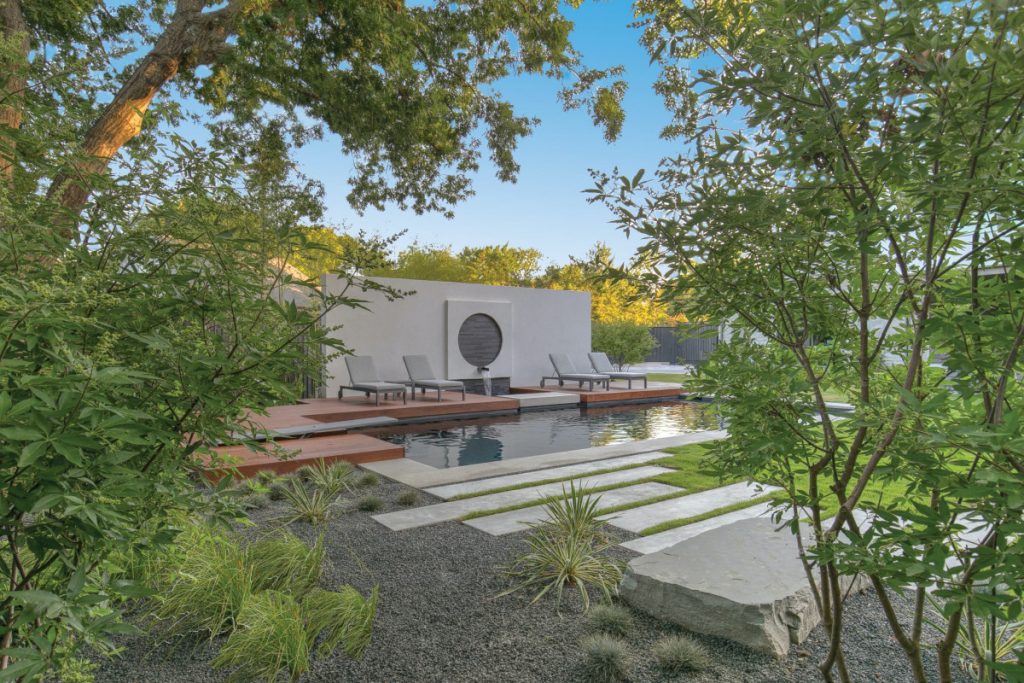
Applying Science to Scenery
Before meeting with a landscape designer, consider what elements suit your needs—after all, personal sanctuaries are just that—personal!
Hobbies & Interests
Do you have a penchant for pickleball? Are you an avid reader? Do you take pride in perfecting the perfect steak sear? Your hobbies and interests help to determine what outdoor areas to incorporate into your landscape plan.
Aesthetics
The architecture of your home, materials used, and personal style will play into the aesthetics of your personal sanctuary. Your landscape designer will work with you to select the right materials to seamlessly intertwine with your home.
Green Spaces
From native grasses that sway softly in the breeze, shrubs that shroud you in privacy while swimming, or shady trees that provide a respite from the sun while you read, your landscape designer will find the right greenery to suit your space, lift your spirits and satisfy your needs.
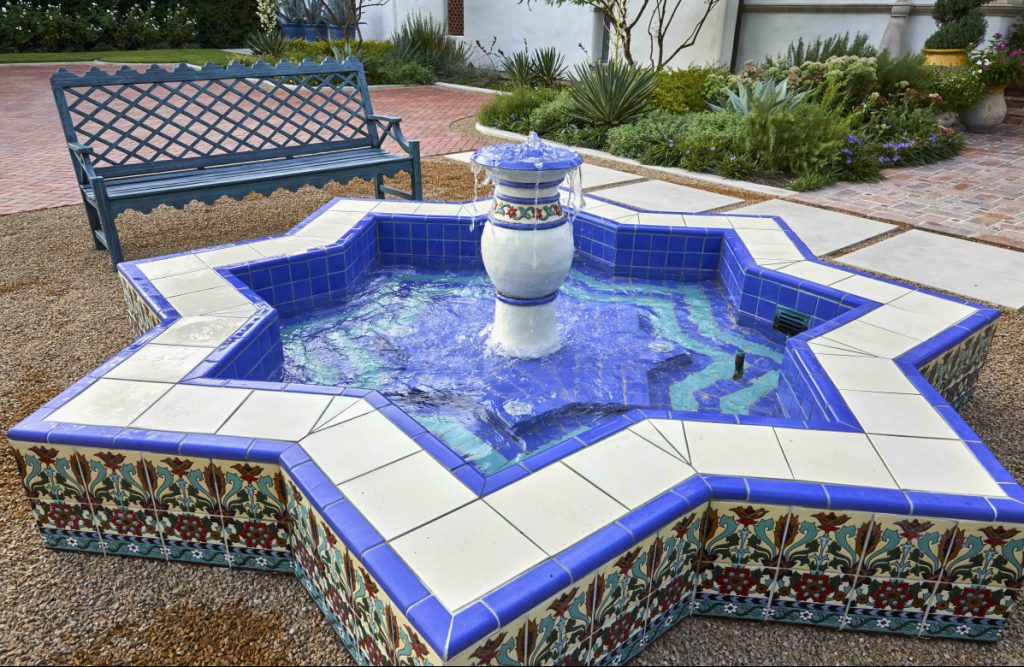
Blue Spaces
Whether you desire the tranquil sounds of a bubbling fountain, a pond for wildlife and reflection, or a pool for refreshment, our landscape architects, builders, and installers, will craft the water feature of your dreams.
Structures
From yoga and sun decks, outdoor fire features, or arbors, to privacy walls, entertaining spaces, or complete outdoor rooms, we will cultivate calm and create harmony with physical elements and nature.
So, what are you waiting for? You don’t need a boarding pass to escape to an outdoor oasis. Contact us to begin the journey toward peace and relaxation in 2023.
Resources
1. https://cnr.ncsu.edu/news/2022/04/parks-green-spaces-improve-health/
2. https://www.health.harvard.edu/mind-and-mood/sour-mood-getting-you-down-get-back-to-nature
3. https://www.medicalnewstoday.com/articles/322335#why-is-higher-cortisol-an-issue
4. https://www.apa.org/monitor/2020/04/nurtured-nature
You may also enjoy:
